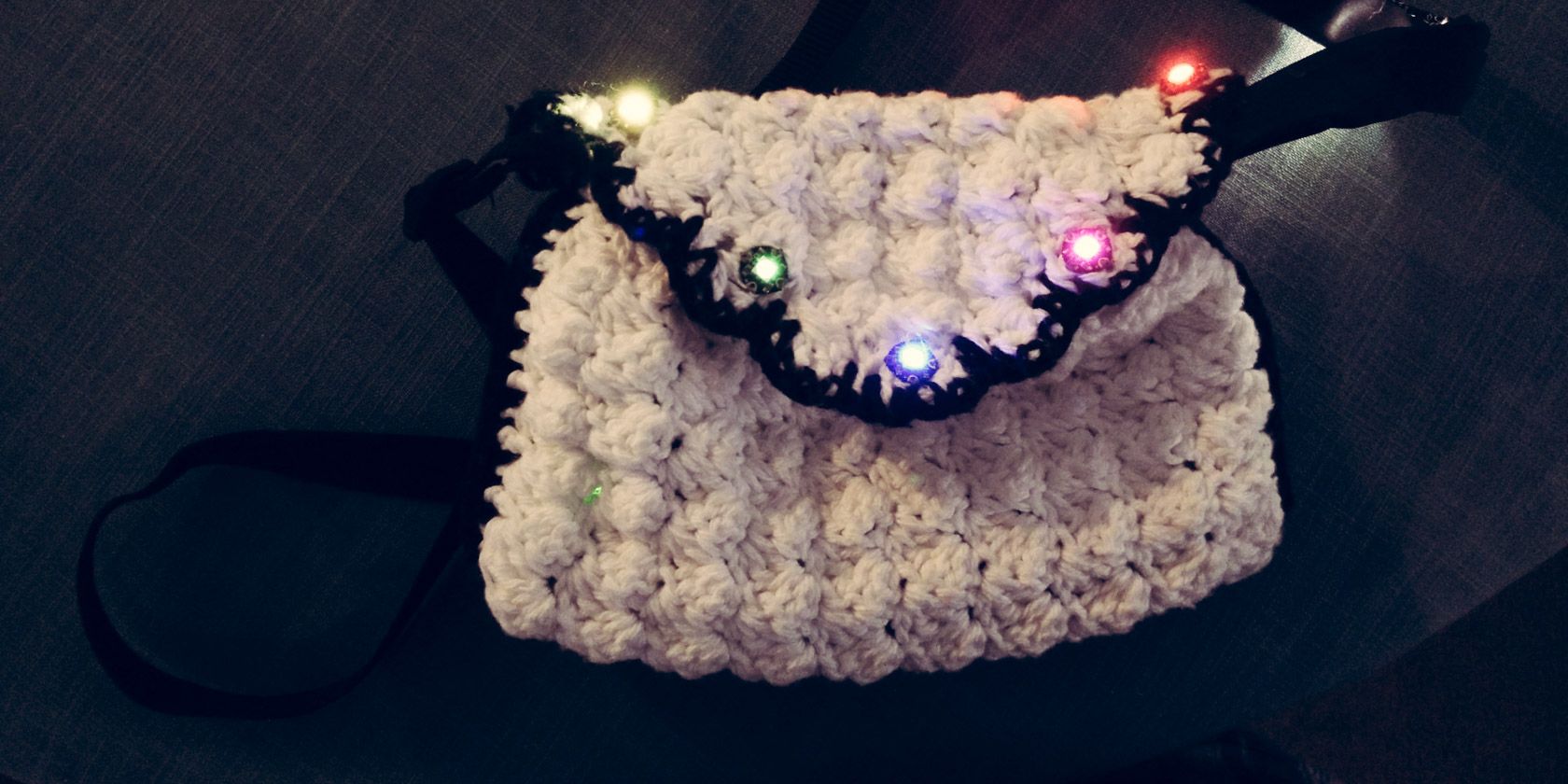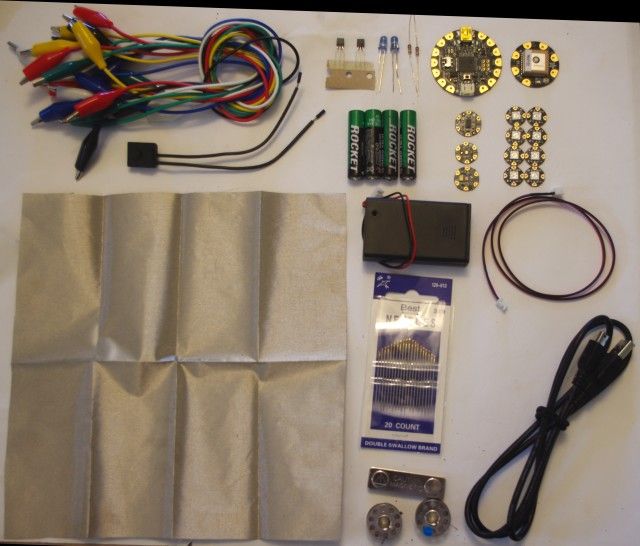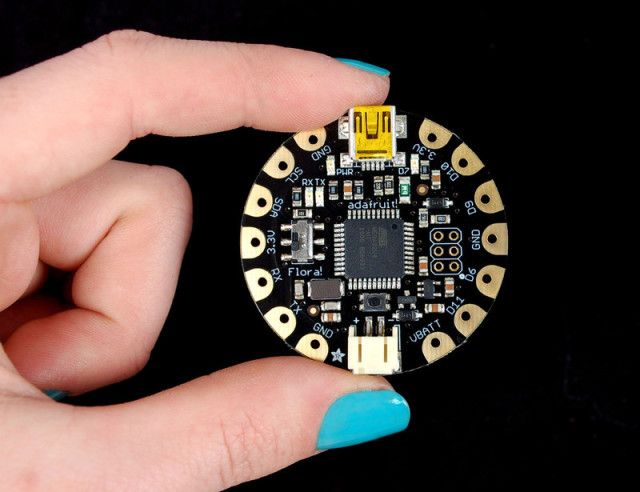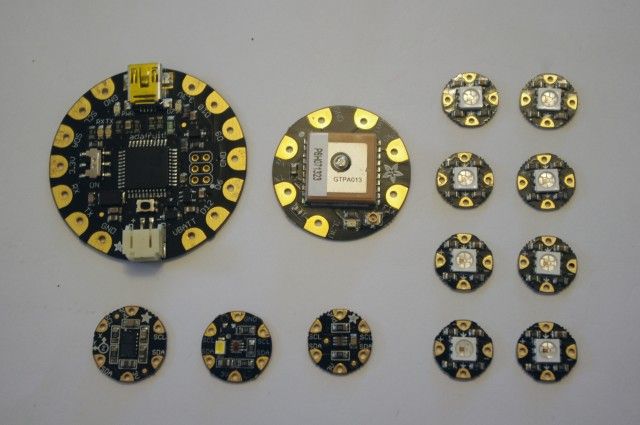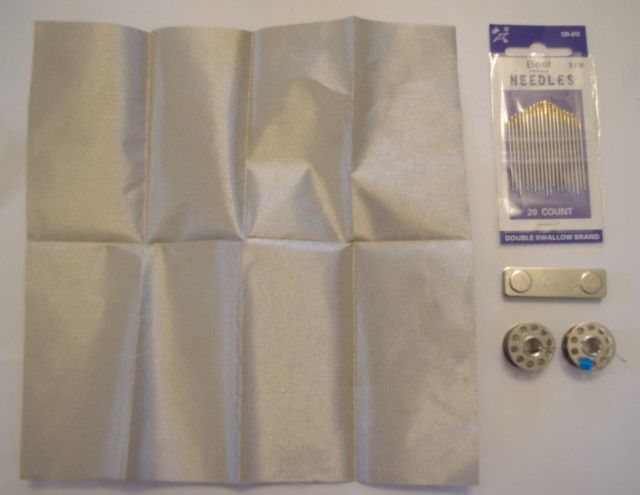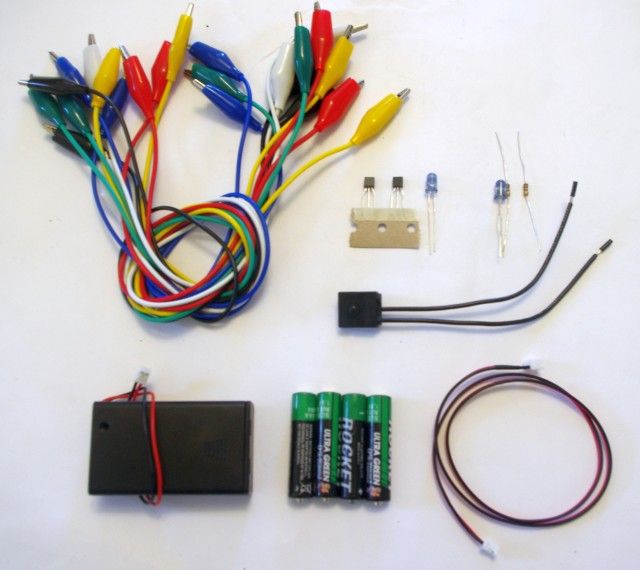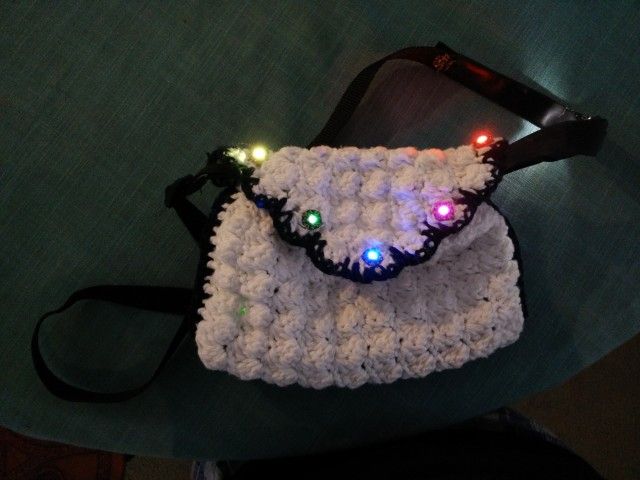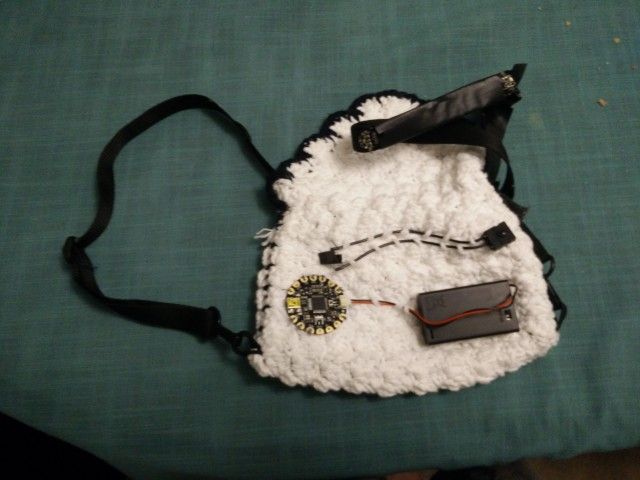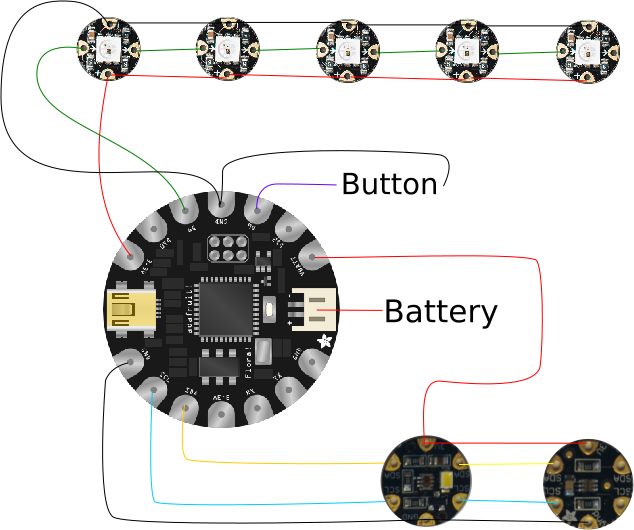Flora Arduino Project Kit
Introducing the Adafruit Flora wearable electronics development kit, generously provided to us by Newark Element14 for review & giveaway! This kit will let you integrate electronics that you program yourself into clothing, bags, accessories and more.
I tested the kit by making a wearable electronic project of my own: a light-up clutch! You can follow along to find out how you would go about making a similar item yourself. For now, back to the kit!
What's in The Kit?
In this $160 Adafruit Flora Wearables Dev Kit you'll get the Flora, a variety of sensors, some NeoPixels and LEDs, and a variety of tools that you'll need for your first foray into wearable electronics projects.
Here's the full breakdown of Newark's Flora Development Kit.
The Flora
The Adafruit Flora (version 1 in this kit) is a round, sewable, Arduino-compatible microcontroller that is the hub of the whole system. It's designed with all the components flat against the board wherever possible to keep it from catching on fabric.
You can program it via the mini-USB port, which offers 3.3 volts of regulated power. It has a reset button, and an on-off switch that operates when powered by battery.
NeoPixels & Sensors
Newark's Flora Development Kit includes eight Flora RGB NeoPixels - individually addressable RGB LEDs that are really easy to work with. There are also four sensors that you can use to gather data on location, time, light, color, movement, and direction.
- Flora Wearable GPS Module: This can make your project location-aware, and sync to local time.
- TSL2561 Flora lux sensor: This senses light levels.
- LSM303 Flora accelerometer/compass sensor: This senses movement and direction.
- TCS34725 Flora color sensor: This senses the color of an object you touch it too.
Sewing & Wearable Project Supplies
You'll find a few items to attach your electronics to fabric, of course.
- Thin and medium stainless-steel conductive thread
- Needle set
- Magnetic pin back
- Woven conductive fabric
Electronics Supplies
Lastly, there are a variety of basic electronics pieces rounding out the kit.
- Three AAA battery holder
- 12 Alligator clip test leads
- USB cable
- Four alkaline AAA batteries
- Two PN2222 transistors
- Two 5mm IR LEDs
- Two 100ohm resistors
- Tactile switch
- JST-PH battery extension cable
Getting Started
You can find an abundance of projects and tutorials on Adafruit's Learning Center. Adafruit's Becky Stern and Tyler Cooper also published a book with Make: Getting Started with Adafruit Flora which you can find available on Amazon.com for $15.
You can learn to program in Arduino (which the Flora is based on) here at MakeUseOf, too.
Test Project: Chameleon Clutch Purse
To test this Flora development kit, I decided to make a light-up crochet clutch. The lights can change colour to match accessories you wear, or objects around you. The lights are also programmed to get brighter in a dark room.
Constructing The Clutch and Adding Electronics
I crocheted the Berry Sweet Clutch pattern by Drew Emborsky, and made a few changes. I added a midnight blue border, a strap, and attached five fabric-friendly NeoPixels to the flap. Obviously if you want to make a similar project, you don't have to crochet a purse! You can sew a totebag, or knit a scarf, or use whatever textile crafting skills you have - or just enhance something already in your wardrobe.
Here's a picture of what the bag looks like turned inside out.
The NeoPixels connect to a Flora, battery, button, Flora light sensor, and a Flora color sensor with 3-ply conductive thread, stuffed into the purse and woven in between the fibres of yarn.
In the above diagram, the red lines are for Power, and the black lines go to Ground. The other colors are for different data lines to and from the pixels and sensors.
Programming the Flora
After setting up the Arduino Flora IDE and installing the board, relevant drivers, and libraries, I programmed the color sensor to activate whenever the project is turned on. It shines a bright light on an object so it can get an accurate color reading. The NeoPixels read that data and make the colour match.
If you're happy with that function, you can find detailed instructions on how to put that together by following along with Adafruit's Chameleon Scarf and adapting where necessary.
Since I was setting out to see what I could make with more of the kit, I added a light sensor, so the NeoPixels are programmed to dim in a bright setting, and get brighter in the dark. I also added a button to cycle through different modes to change colors just for fun. Here's the code I developed.
Overcoming Challenges
For me, the most challenging part of this project was making sure my conductive thread connections were touching the Flora's gold pin pads properly, because I wasn't soldering them together.
I had a multimeter available though, a handy tool I recommend to make your foray into wearable electronics easier. A multimeter helps you check which points on your circuit are electrically-connected (as well as many other things).
Alternative Project Ideas
Interested in this kit but want to get the most out of it? Order yourself an extra Flora, and a 16 NeoPixel light ring, and you can make both a chameleon accessory like this clutch (or hat, scarf, belt, necklace...) and the Flora NeoGeo Watch.
If you're a cyclist and looking to make something really useful, sew some NeoPixels into the back of a windbreaker, connect them to the Accelerometer and the Light Sensor, and you can make yourself DIY brake lights for when you ride your bike!
You'll find many more Flora project ideas on the Adafruit website.
Are You Ready to Make a Wearable Device?
If you have a basic background in electronics or in textile arts, this kit from Newark is a great way to make the leap to the other field, or combine these interests into your first wearable tech piece.
If you're new to both electronics and textiles, it won't be easy jumping straight into wearables, but it can be done. I'm a novice at both, and I consulted with fellow DIY makers I know (shout out to Daniel Amaya and Andrew Coccimiglio) when my circuits or code wasn't behaving right. It makes a big difference if you can attend maker meetups, hackspaces, etc, to be around other people who are working on DIY projects in the same place you are. If your area doesn't have groups like that, the Stack Exchange and the Adafruit Forum is an active place to go to get help on wearable electronics projects. They even hold weekly video chats with engineers.
There are also plenty of great resources on the Adafruit Learning Centre to help you learn programming and connecting electrical circuits to wearable projects. If you're really new to electronics, it helps for you to learn the basics of a circuit and the associated safety issues first (although you won't do much damage with this kit as long as you make sure your power line never touches your ground line).
Is Newark's Flora Development Kit Right for You?
The kit might be overkill if you're a maker or crafter with a lot of supplies already. You might already have some of the parts from sewing (like conductive thread, needles), or basic electronics parts (like LED lights, resistors, transistors, alligator clips).
If you're not interested in making particular kinds of projects you could save money by getting only the parts you need. After all, if your projects don't need location-aware functionality or timekeeping, you might want to get a kit without the GPS sensor, which ends up being the most costly part of this kit. Or conversely, if location-aware functions are important and you don't need some of the other sensors, try the Flora GPS Starter Kit instead.
Thanks again to Newark Element14 for providing this kit for us to test! If you'd like to win a complete kit for yourself, enter below, and let us know what project you'd like to create in the comments!
[recommend]The Flora Arduino Project Kit contains everything you could possibly need to start making wearables, with solid online documentation, but consider if you really need the GPS functionality for your project.[/recommend]
Send your products to be reviewed. Contact James Bruce for further details.
Image Credits: Flora Original by Becky Stern via Adafruit.

